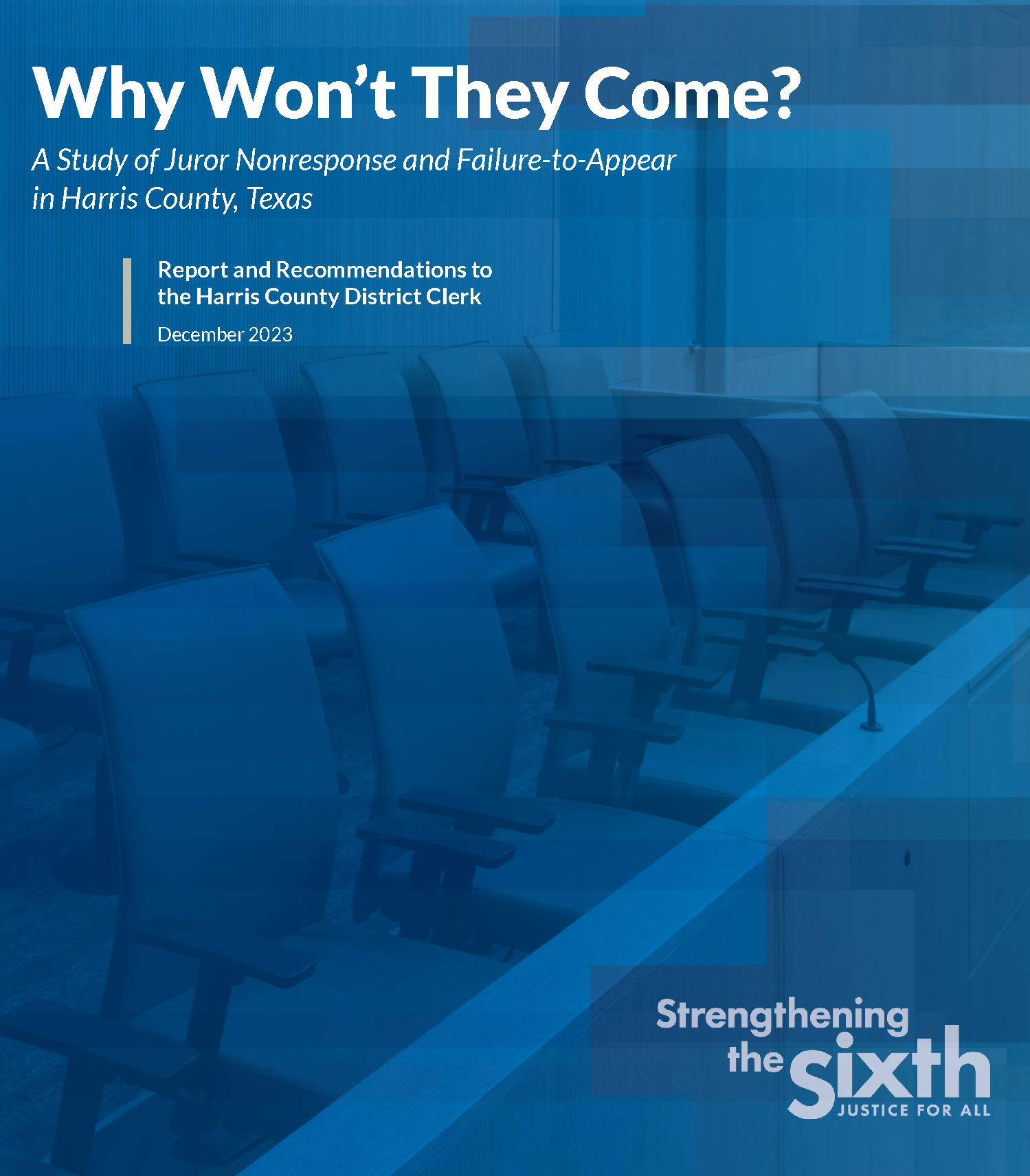Report recommends ways courts can increase juror response and participation
February 7, 2024 - When juror nonresponse rates reached 48 percent in the Harris County district court (Houston, Texas) in 2022, District Clerk Marilyn Burgess wondered, "Why won't they come?"
in 2022, District Clerk Marilyn Burgess wondered, "Why won't they come?"
With help from NCSC's Center for Jury Studies and its partners in the Strengthening the Sixth project, Burgess found her answer: Many people didn't receive their summons.
This discovery and more can be found in the recently published report, Why Won't They Come? A Study of Juror Nonresponse and Failure-to-Appear in Harris County, Texas. Using survey responses from the local community, Burgess and researchers sought to identify the root cause of the rising nonresponse rates.
The report suggests that a significant portion of the nonresponse and failure-to-appear (FTA) rates may be due to unreturned undeliverable summons rather than unwilling jurors, which aligns with the results from the American Judicature Society Survey that studied juror nonresponse and FTA in 1998.
Survey respondents provided various reasons for not reporting for jury service. In addition to not knowing they were summoned, other reasons included poor health, unemployment, lack of transportation, or childcare responsibilities.
Some respondents believed they didn't need to respond to the summons if they were unable to serve, while others felt that they didn’t have enough education to serve, and a few didn’t report due to a lack of faith in the justice system.
Burgess was also concerned that societal changes since 1998, especially those brought about by the COVID-19 pandemic, may affect a juror’s willingness to serve. Data from the NCSC State-of-the-States Survey of Jury Improvement Efforts show that nonresponse and FTA rates have increased since the pandemic began. On average, the rates rose from 14% in 2019 to 16% in 2022, and some courts have reported rates exceeding 33%.
However, NCSC Center for Jury Studies Director Paula Hannaford-Agor noted that nonresponse and FTA rates began rising well before the global pandemic. When NCSC published the 2007 State-of-the-States Survey of Jury Improvement Efforts, the average nonresponse/FTA rate was only 9%.
“Undeliverable rates used to be the single greatest contributor to poor jury yield,” said Hannaford-Agor. “But undeliverable rates decreased, while nonresponse/FTA rates have increased. It’s a problem everywhere—not just in Harris County, Texas.”
The study’s final recommendations to increase juror response and participation in Harris County can serve as a model for other courts.
Read the full report to learn how the final recommendations to increase juror response and participation in Harris County can serve as a model for other courts.
Updated judicial salary survey data is now available
NCSC’s Judicial Salary Survey tracker has been updated to include salary information as of January 1, 2024. NCSC gathers data on the salaries of judicial officers across the United States, its territories, and the District of Columbia. The salary tracker displays the salaries and rankings for judges and justices of the courts of last resort, intermediate appellate courts, and general jurisdiction trial courts. The updated information includes data from 53 reporting jurisdictions.
